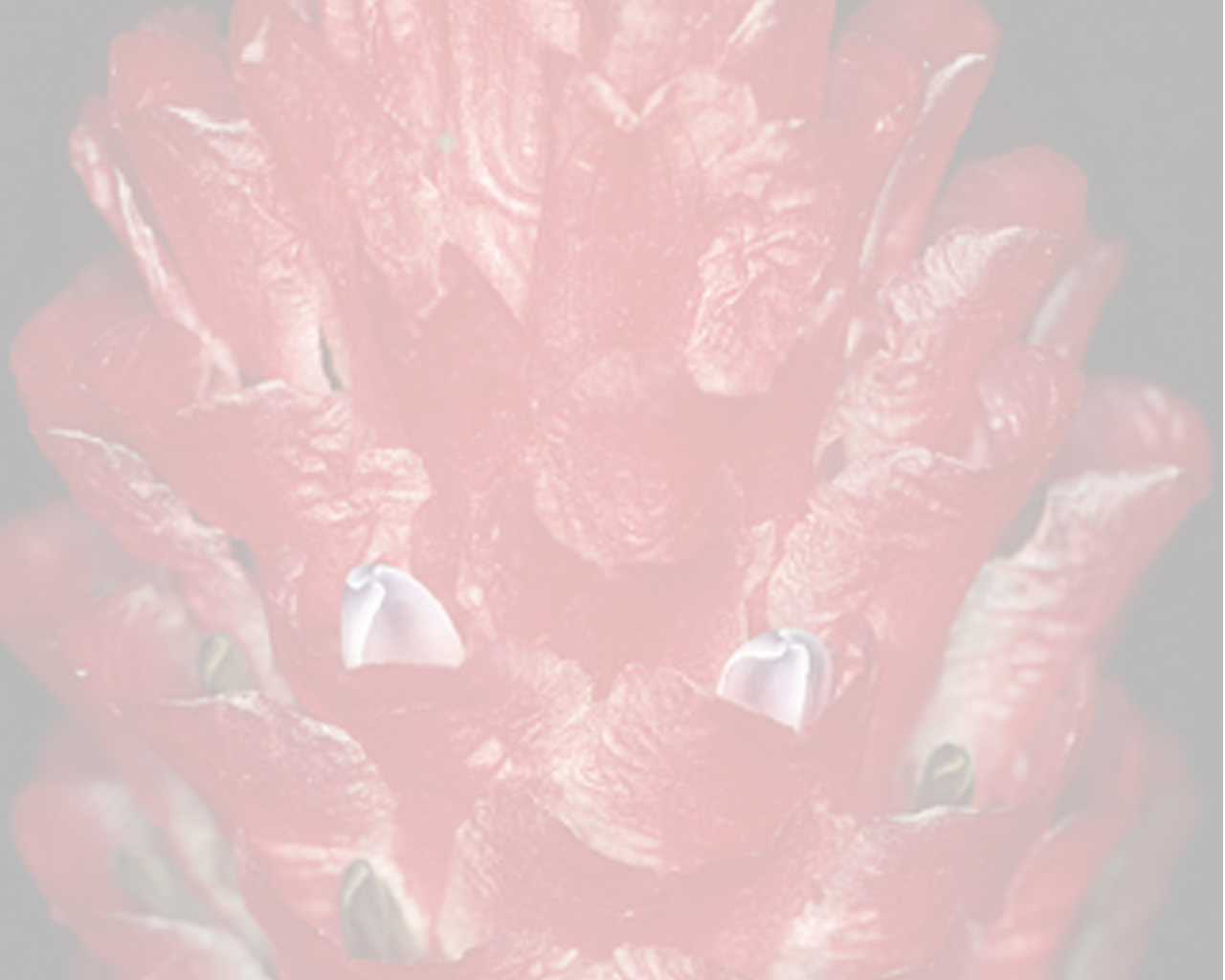Quesnelia lateralis Wawra
Literature references:
*move your mouse pointer over the page numbers to see comment
Comments:
- The Quesnelia seideliana L.B.Sm. & Reitz we are growing in the Botanic Gardens of Utrecht was collected in Brazil, but unfortunately without any collecting data. It seems to be larger in all parts than the type collection used by Lyman B. Smith (1979) for his description, and several differences are found comparing it with his description. This could be expected when a description is based on one specimen only, not giving the variation within a species.
A short description giving the differences and some additions is given below: Leaves in culture, two plants 50 -93 cm long, 4-6 cm wide, cinerous lepidote with transverse bands abaxial, less lepidote adaxial. Inflorescence the fertile part 5 cm long (excl. petals 4.5 cm) with several narrowly-ovate peduncle-bracts clustered below the inflorescence forming an involucrum; peduncle-bracts remote except at base and apex, the central ones elongate and over 10 cm long, densely cinerously lepidote; floralbracts 1.5 x 2.5 cm, ovate, with triangular acuminate apex, all distinctly exceeding the sepals, ochraceous and slightly tinged reddish at apex; epigynous tube about as long as the ovary; sepals 10 x 5 mm, sub-oblong, obtuse, slightly asymmetrical, fleshy and connate for 2 mm at the base, lepidote; petals ligulate, 3 x 0.7 cm, bright (pale) blue in upper half, bearing 2 fimbriate ligulae at the base and 2 lateral folds reaching 2/3 of the petal; anthers dorsi-fixed near the centre; pollen cream.
It is an easy species to grow and flowers from all shoots at the same time (even from small shoots). Although the blue petals seem to be different (less intense) to that of Quesnelia lateralis Wawra, this is not the case. When you hold the petals of the two species together it is exactly the same color. It is the contrast of the blue petals of Q. lateralis with the bright red bracts that makes the difference.
The Quesnelia lateralis that we are growing is from Rio de Janeiro. I have not seen lateral inflorescences yet, only an apical one, but never the less it has a spectacular coloration. Looking at the b&w picture (Abb. 322) in the book by Rauh (1981) I expect that a lateral inflorescence develops from a very premature shoot, not really lateral like in Disteganthus lateralis and Tillandsia complanata that are producing several lateral inflorescences at the same time. Interestingly all the lower flowers in our specimen have only two sepals, two petals and four stamens, but they look normal. They just open slightly less than Q. seideliana, keeping a tubular look. Lyman B. Smith cites one specimen from Espirito Santo and several from Rio de Janeiro, but in this case our specimen has some characters different to the description.
A short description giving the differences and some additions is given below: Inflorescence: the fertile part about 9 cm long; floral-bracts 3.5 x 1.3 cm, apiculate, the lower much exceeding the sepals, the upper only slightly exceeding them, sparsely lepidote, bright red; sepals fleshy at the base, short connate, strongly asymmetric, the lateral wing exceeding the apex; petals ligulate, bright (pale) blue toward apex, white at base, broadly rounded or faintly sub-apiculate, bearing 2 fimbriate ligulae at the very base and 2 lateral folds reaching 2/3 of the length of the petal; anthers dorsi-fixed near the middle; pollen cream.
As far as I know at least the last species has been introduced into some collections in the U.S.A. but I think that both are. And they are worth it, just because they are easily growing and flowering. The more well known Quesnelia liboniana (De Jonghe) Mez, that has about the same needs and often makes several shoots, can be found in many collections. —See Gouda 2006a p. 56(2): 52-54
- by Claudia Magalhaes Vieira in PESQUISAS, BOTANICA 57. 7-102. 2006
Ecological data: It occurs exclusively in the mountainous chain of the Serra do Mar, inhabiting the Atlanic Pluvial Forest montana and Campos Altimontana, —See Vieira 2006

